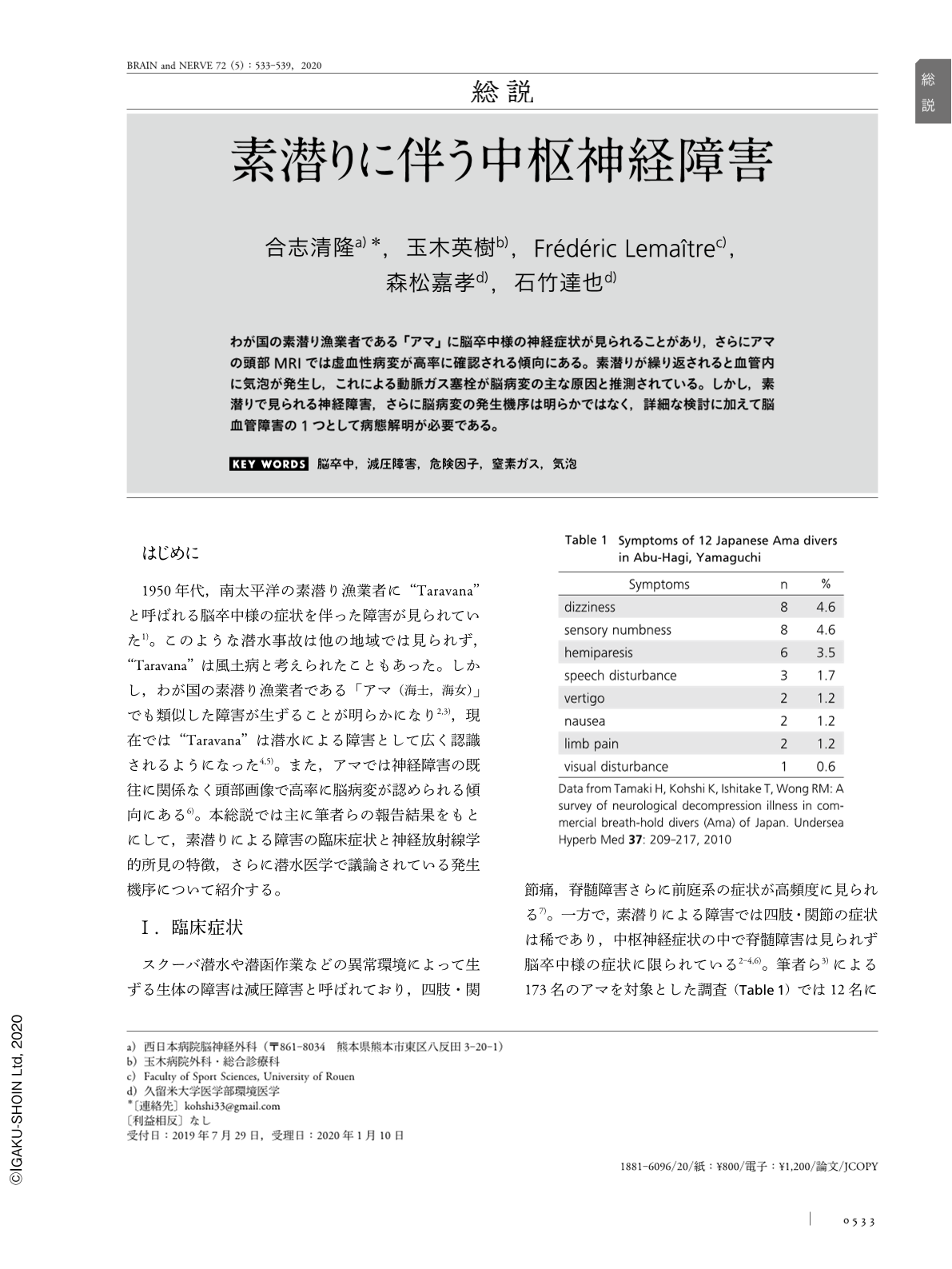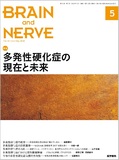Japanese
English
- 有料閲覧
- Abstract 文献概要
- 1ページ目 Look Inside
- 参考文献 Reference
わが国の素潜り漁業者である「アマ」に脳卒中様の神経症状が見られることがあり,さらにアマの頭部MRIでは虚血性病変が高率に確認される傾向にある。素潜りが繰り返されると血管内に気泡が発生し,これによる動脈ガス塞栓が脳病変の主な原因と推測されている。しかし,素潜りで見られる神経障害,さらに脳病変の発生機序は明らかではなく,詳細な検討に加えて脳血管障害の1つとして病態解明が必要である。
Abstract
Diving accident in breath-hold (BH) divers (Ama) is a stroke-like neurological condition involving the brain. Ama divers are at a risk of ischemic brain injuries which are situated in watershed or terminal zones of cerebral arteries, and/or corticomedullary junctional area of cerebral arteries. The underlying mechanisms of brain damage in BH diving remains to be elucidated. After repetitive BH dives, nitrogen (N2) bubbles may be formed in the venous side of tissues and flow into the right atrium. N2 bubbles passing through the heart or the lungs is the most likely contributing factor. The pathophysiology of diving accident in BH diving is unclear, and more studies for stroke are needed to further elucidate its nature.
(Received 29 July, 2019; Accepted 10 January, 2020; Published 1 May, 2020)

Copyright © 2020, Igaku-Shoin Ltd. All rights reserved.


